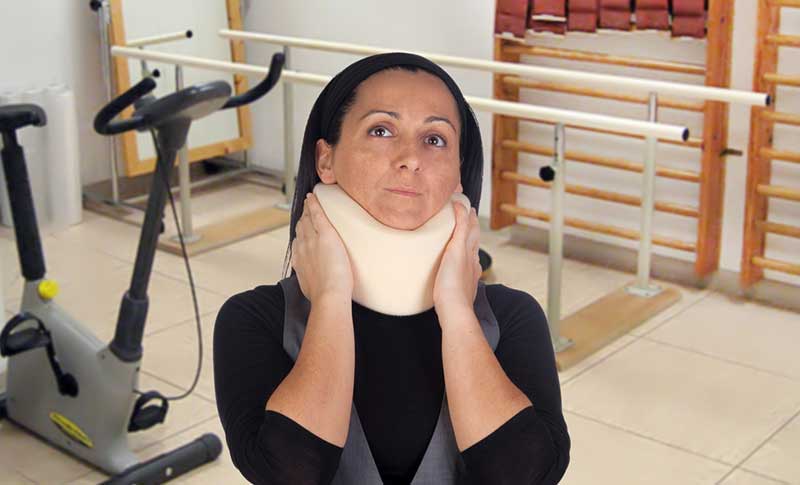Neck Braces for Neck Pain
At Burlington Sports Therapy, we practice in an evidence-based manner. That means we try to base our recommendations and our treatment approach on research so that the care we deliver to our patients is the best it can be.
Although some clinical decisions are based on a practitioner’s experience and opinion, there is usually research published somewhere that will help guide the practitioner into making good recommendations for patients. It’s always interesting though when the literature does a reversal or when a study is published that contradicts common understandings. An interesting example is a 2009 study published in the British Medical Journal with respect to neck pain and wearing a neck brace.
Neck Brace Study
All the subjects in the study had what is called cervical radiculopathy. Cervical radiculopathy is a very common and very painful condition that involves neck pain and nerve irritation. Known by many as a ‘pinched nerve’, symptoms include some or all of the following; numbness, tingling, pins, and needles, burning, aching and throbbing in the neck and arm. In the study, there were 205 patients, divided into three groups. One group was a control group, and the other two were treatment groups. One treatment group was instructed to wear a soft cervical neck collar for 3-6 weeks (which is not typically recommended these days). This relative rest was to immobilize the area and allow healing to occur.
The other treatment group was an exercise group. This group (the physiotherapy group) received 12 treatments over the span of 6 weeks. No passive or manual therapy was provided. These patients did supervised exercise of the cervical musculature. The results of the study were quite surprising! The two treatment groups fared better than the control group, so doing something was better than doing nothing. What was very surprising though was the patients who wore the immobilization fared the best. The results were statistically significant, so it suggests that for patients who have acute onset cervical radiculopathy, brief use of a cervical immobilizer might be a good idea. This contradicts what we usually advise our patients!
It’s important to clarify a few things here; you can see that “might” was underlined above. I would still not recommend patients to use a soft cervical immobilizer for neck pain. This is one study and not a vast body of convincing literature. At the same time, to be fair, we can admit that wearing a neck brace in the short term for acute cervical radiculopathy might not be a preposterous idea. Perhaps it can be said that in the rehabilitation world, for many different injuries, the mentality has shifted from immobilization and rest to that of active recovery and to ‘keep moving’. Given this, we normally don’t immobilize the neck any longer for neck pain that is stable.
Decline of Whiplash Neck Braces
In the past, we would often see people walking around after a whiplash injury wearing those bulky, spongy neck braces. We don’t see that these days. The theory is that the area would decondition. That means that prolonged rest in a neck brace would cause the muscles to shrink, get weak, the neck would stiffen and therein the recovery would take a lot longer. The only time a cervical immobilizer was and is used is when there is suspicion of a very serious neck injury (like a fracture). Perhaps this literature will cause many practitioners to soften their stance on neck immobilization.
It’s very important to note the stage of the condition these patients were in, however. They had acute (new onset) neck pain with arm symptoms. They used the neck brace for a very short period of time as well. If you’ve had neck pain for more than a few weeks, I would be very hesitant to recommend a neck brace. At the same time, this study provides some interesting insight into treating every patient as an individual. Perhaps with time, if further studies are published that can replicate these results, cervical neck collars might come back into fashion. In the meantime, it is always recommended that you consult with a knowledgeable practitioner who can assist you in making good decisions with your recovery that is based on best evidence, practitioner experience, and patient preference.
By: Dr. Kevin McIntyre B.Kin., DC
Reference
Kuijper B. et al. Cervical collar or physiotherapy versus wait and see policy for recent onset cervical radiculopathy: randomised trial. British Medical Journal 2009; 339.b3883.








